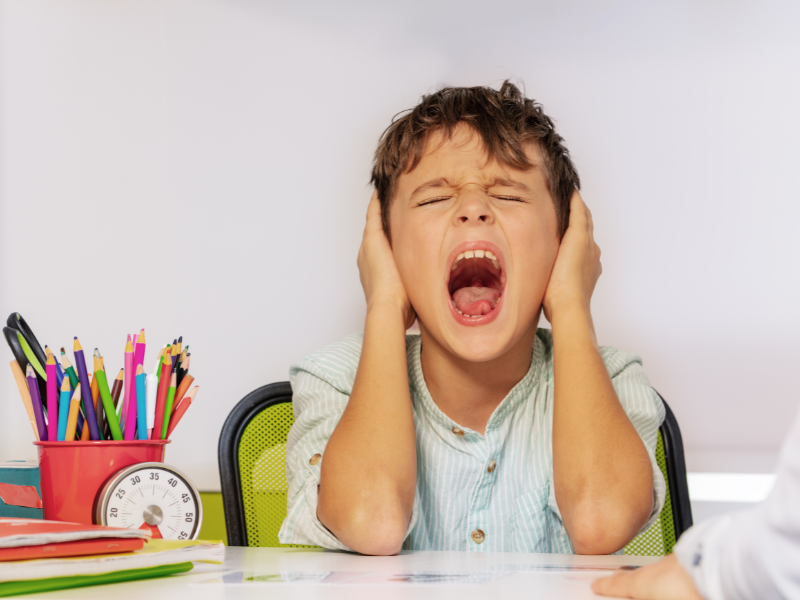Autism Spectrum Disorder

Autism spectrum disorder (ASD) is a complicated developmental disease. It is characterized by chronic difficulties with social communication, repetitive behavior, and narrow interests.
The term “spectrum” shows that people with ASD can have a wide range of symptoms. These symptoms can vary in how serious they are.
ASD can be diagnosed at any age. However, it’s classified as a “developmental disorder” since symptoms often arise within the first two years of life. Symptoms may last throughout a person’s life but may improve over time.
Autism Spectrum Disorder versus Autism
In 2013, the American Psychiatric Association updated the term from “autism” to “autism spectrum disorder.” ASD is now a broad term that encompasses various levels of autism. This spectrum includes conditions that were previously thought of as distinct, such as:
· Autism
· Asperger syndrome
· pervasive developmental disorder
ASD versus DHD
Autism and Attention-Deficit/Hyperactivity Disorder (ADHD) share many similarities. However, it’s important to note that ADHD is not considered part of the autism spectrum.
The symptoms of ADHD and autism can be similar, causing difficulties in attention and impacting social skills in children. These shared characteristics may sometimes lead to misdiagnoses.
Genetically, ADHD and autism are connected. If a child has one of these conditions, their likelihood of having the other increases. Additionally, a child with autism is more likely to have a close relative with ADHD.
Diagnosis and Early Signs of ASD
Diagnosing ASD involves a comprehensive assessment. Early signs of ASD often become apparent during the first two years of life.
1. Social and Emotional Indicators
· Limited or Absent Eye Contact: Difficulty establishing and maintaining eye contact.
· Lack of Interest in Peers: A limited interest in interacting with other children. Also a lack of engagement in pretend play.
2. Communication Challenges:
· Delayed Speech Development: Some children may have delayed speech. They may also exhibit echolalia (repeating words or phrases).
· Difficulty Understanding Nonverbal Cues: Limited understanding of gestures, facial expressions, or body language.
3. Repetitive Behaviors:
· Fixation on Specific Objects: Intense interest or fixation on specific objects, often to the exclusion of other toys or activities.
· Resistance to Change: Distress or resistance when routines are disrupted or changed.
Autism Spectrum Disorder Treatment
Current treatments for ASD aim to alleviate symptoms that impair daily functioning and quality of life. ASD impacts each person differently, which means that persons with ASD have unique strengths and challenges. They also have different treatment needs. Treatment programs typically involve numerous professionals and are tailored to each individual.
Autism Spectrum Disorder Risk Factors
There isn’t just one reason why someone might have Autism Spectrum Disorder (ASD). Many factors can make a child more likely to have ASD, including things such as:
· Environmental
· Genetic
· biological
The specific causes are not fully understood. However, available evidence suggests that the following factors may increase the risk of ASD in children:
1. Having a sibling with ASD.
2. Going through complications during birth.
3. Being born to older parents.
4. Having certain genetic or chromosomal conditions, like fragile X syndrome or tuberous sclerosis.
Interventions and Therapies for ASD
Early help is crucial for people with ASD. Different therapies are often used together:
1. Speech-Language Therapy: Therapists work on improving:
· Language
· social communication
· practical language skills
2. Applied Behavior Analysis (ABA): This therapy focuses on:
· encouraging good behavior
· reducing unwanted behavior through structured methods
3. Occupational Therapy: Therapists help with:
· sensory challenges
· motor skills
· daily activities to promote independence
4. Social Skills Training: Learning and practicing social skills in structured settings help individuals with ASD in social interactions.
5. Educational Support: Working with teachers and creating the following helps with academic challenges.
· personalized learning environments
· individualized education plans (IEPs)



